2 Mar 2018
Painted Advertisements in Islington: Part 4
The list below of painted advertisements in Islington was compiled in the hope that some of those reading it might write in with additional locations not known to the compiler, and in the belief that painted advertisements in other parts of London would make a useful, educative and rewarding topic for those, whether private enthusiasts or history teachers in secondary schools, who are interested in setting up a local history project that has not already been thoroughly explored.
This was how A. D. Harvey introduced his inventory of Painted Advertisements in Islington in an article for Volume 50 of Transactions of the London and Middlesex Archaeological Society. Last year I set myself the task of retracing his steps in 1999 to see what remained and what had been lost in the 19 years since. I completed most of the work quite soon after publishing the original blog post, but was waiting for just one location on Whitecross Street to become visible again after the removal of scaffolding on the building. This has now happened and I have subsequently completed my analysis. I am going to publish the findings as a series of three posts, respectively detailing numbers 1-17, 18-34 and 35-51 of Harvey’s original inventory which is recorded on this map.
I should first note that although Harvey lists 51 locations in his inventory, he actually details 54 signs in total. Item 8 is (inexplicably) split into both (a) and (b) while additional pieces of signage are referenced in the accompanying texts for items 16 (Graham Street) and 47 (Turnmill Street). I will therefore use this higher number in my analysis.
In total, 21 of the signs documented by Harvey are no longer visible. The reasons for this are broadly as follows: Building demolished (4); Building cleaned (5); Sign painted over (3); Faded completely (2); Covered by building works (1); Unknown (6). One sign (Mallow Street) was lost due to a combination of being painted over and obscured by the upward extension of the neighbouring building. Given that some would be still be visible despite the building works, I have categorised this as being painted over. Nonetheless, both factors in this sign’s loss fall under a broader category of ‘property development’ which accounts for 13 (just over 60%) of the 21 losses, with just two (c.10%) disappearing due to ‘natural causes’ and the remainder being unknown.
This rate of loss approximates to just over one per year since Harvey’s initial survey i.e. they are being lost at a rate of 2% per year. However, in parallel, signs in Harvey’s survey have since been revealed, or become more visible than when he was writing. There are six of these in total, including one (Chapel Market) which is a ‘like-for-like’ replacement; the Redferns Rubber Heels sign was revealed after the cleaning of the partial John Kinns sign. If we combine the losses and gains then we arrive at a net figure of 15 lost from an initial sample of 54 which gives an annual rate of loss of 1.5%. This shows that, within this specific geography, more are being lost than revealed with the ratio of reveals to RIPs being 2:7.
While this analysis pertains only to this particular part of London, it is nonetheless a useful gauge for the nature of losses (predominantly property development) and the rate at which these are occurring. I would be very interested to find similarly detailed historical inventories that could be compared to the current day to see if similar trends are evident elsewhere.
So, over to the report, first up Numbers 35-51 from Harvey’s survey…
35. 90 Newington Green
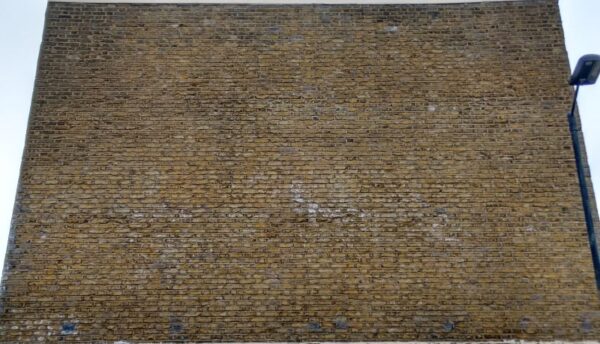
Harvey refers to this Brymay sign as “very faint” and it is now completely gone bar a few patches of blue paint still clinging on.
36. 4 Offord Street N1
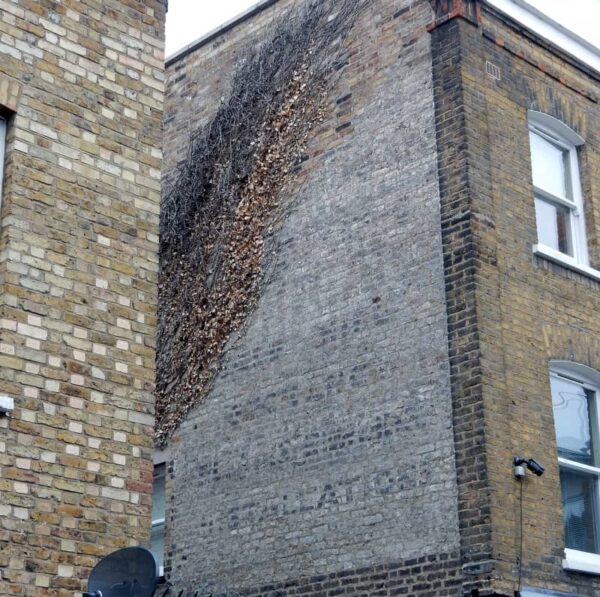
Still visible, with a creeper gradually eating it up.
37. 88 Old Street
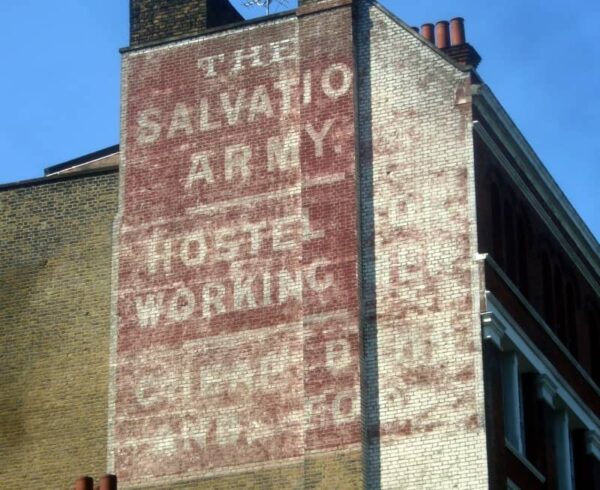
Harvey describes this Salvation Army sign as “illegible” suggesting that it may have been painted over, which the narrow vertical strip on the right clearly has been. However, it remains a mystery what state the bulk of the clearly visible left side was in when Harvey viewed it. A physical covering of some sort seems most likely, although this would be odd given the positioning of the chimney breast.
38. 73 Pentonville Road N1

This is a residential property with nothing visible now. It’ a relatively clean building so perhaps the “Metropole” sign was sandblasted away.
39. 246 Pentonville Road N1
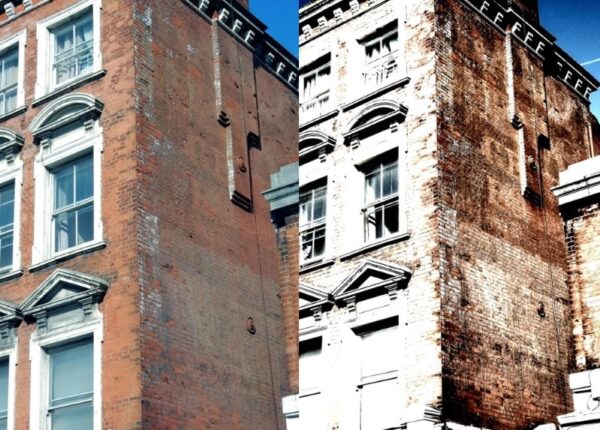
Harvey describes this one as being “painted over in December 1998 but already beginning to show through”. It’s now barely legible, although cranking the contrast up to maximum allows the ‘Daily News’ lines to become more prominent across the top of the wall.
40. Poole Street N1
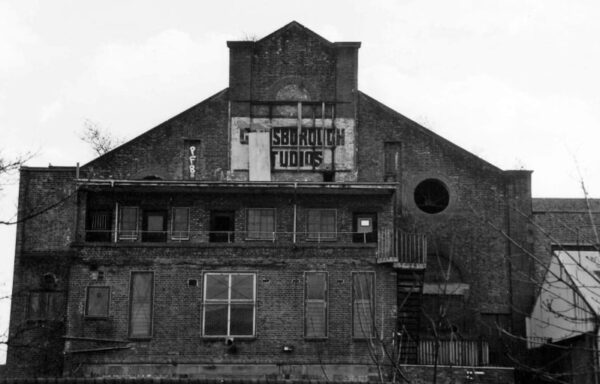
The housing development at this location meant the demolition of this building with its prestigious cinematic history, captured above in 2009.
41. 94 Richmond Avenue N1
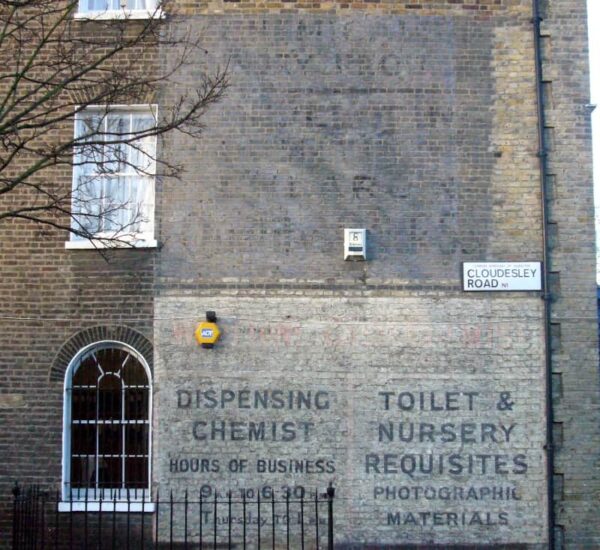
This chemists’ sign is still visible, although the top half is very faint now.
42. 81-82 Roman Way N7
The building that once housed this sign for Romeo Trading appears to have been demolished.
43. 25 St John’s Villas N19
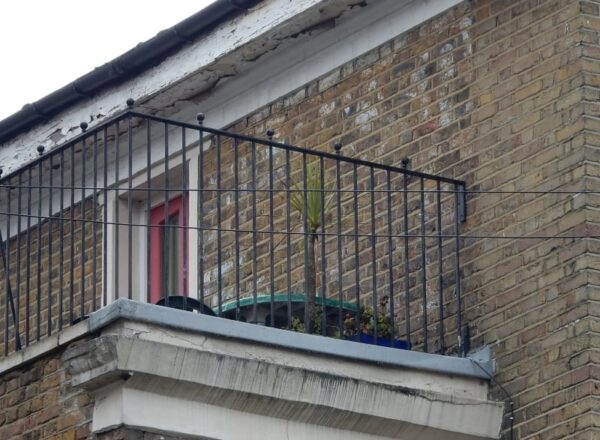
Still there, but very faint and still in an ambiguous fragmented state.
44. 254A Seven Sisters Road N4
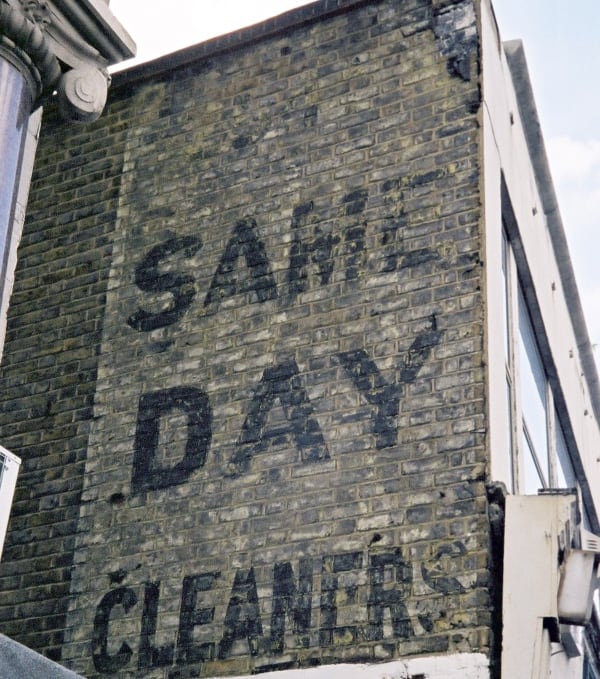
One of the earliest that I ever photographed and still very visible. The wall is largely kept in the shade by the building immediately in front, except for the far right of the sign which is fading more quickly due to greater exposure to the sun.
45. Shepperton Road N1

One of London’s finest, and still holding up well.
46. Sherringham Road N7
Nothing apparent based on the location details given by Harvey, perhaps demolished building and relatively modern development is there now.
47. 89-90 Turnmill Street EC1

This one advertises Bonsoir Pyjamas. The other sign he references on the same building is no longer visible.
48. 347 Upper Street N1
This building has been repainted so perhaps the sign still lies beneath.
49. 143 Whitecross Street EC2
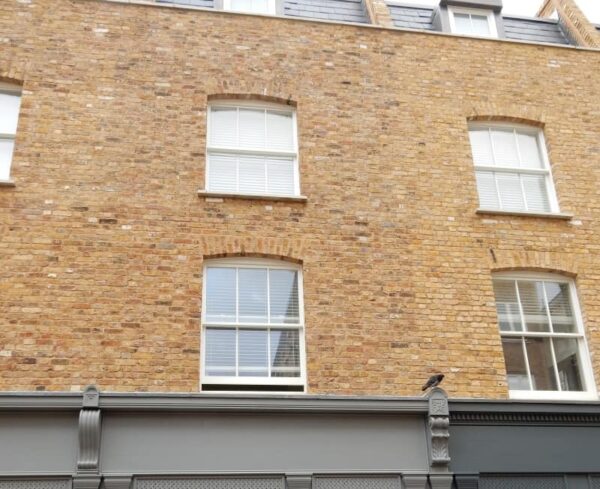
What little could be seen by Harvey is now long gone following the thorough cleaning of this building.
50. Widdenham Road N7
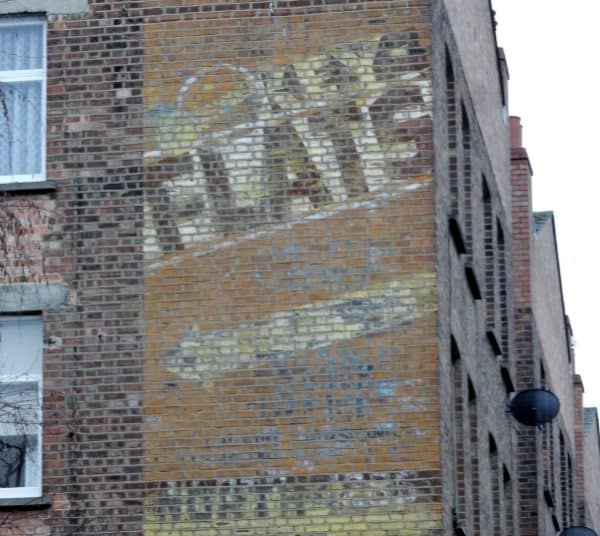
This sign, including small illustrated key, still visible.
51. 14 York Way N1
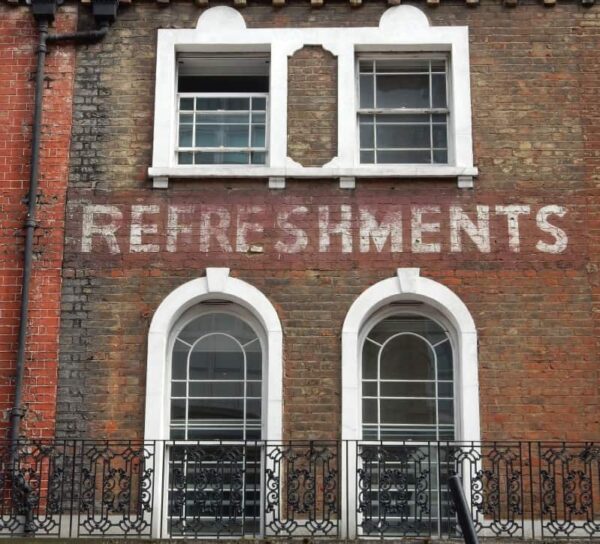
After all that I could use some refreshment; no longer available here at the former premises of Celestino Bertolini, despite the sign enduring.


